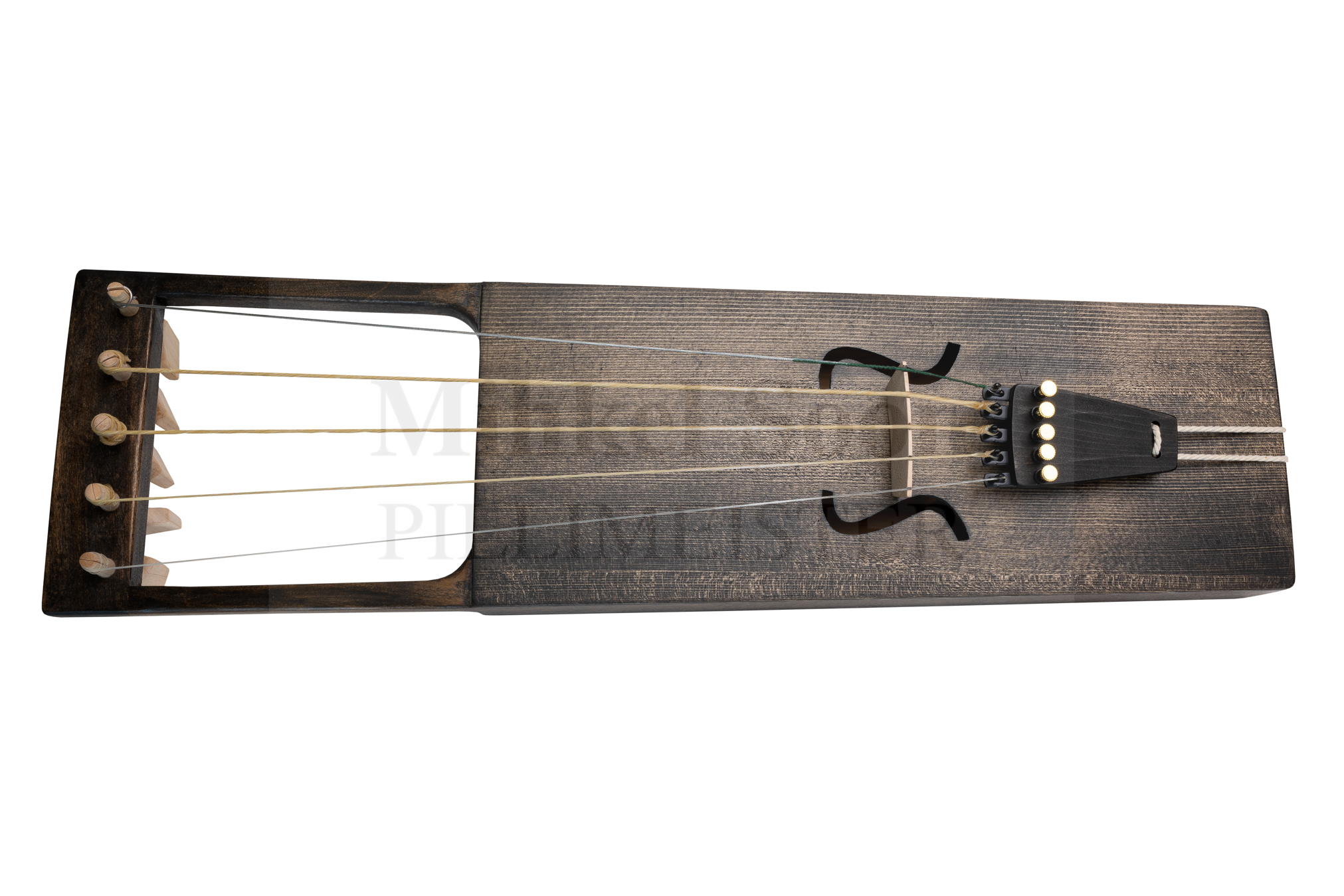Talharpa
€770.00 – €810.00Price range: €770.00 through €810.00
Tuning: E3 – A3 – D2 -D2
Body made of hollowed out single piece of wood with glued crossbar
Fine tuners for exact tuning
Hardwood pegs
Strings made of horsehair or nylon
Belly made of radially cut spruce
Surface finished with sharp handcraft cutting tools
Finished with natural oils based varnishes
Bow included
Dimensions: 53 x 14 x 8 cm
Talharpa: The Traditional Bowed Lyre of Estonia
The talharpa (tagelharpa), also known as the Hiiu kannel, is a traditional Estonian instrument renowned for its distinctive buzzing, humming sound produced by horsehair strings. Handcrafted from carefully selected native hardwoods grown in Estonia and spruce soundboards sourced from the Carpathian Mountains, this instrument offers a rich, resonant tone.
Each talharpa is meticulously crafted by hand, using only the finest materials. The wood used in construction is thermally treated, which enhances the acoustic properties of the instrument and minimizes moisture expansion by up to 50%, ensuring long-lasting stability and superior sound quality.
The design of the Hiiu kannel incorporates all known techniques to improve sound quality. For example, a bass bar is placed beneath the soundboard for the bass strings, and a soundpost supports the treble strings. The soundpost, positioned between the soundboard and base, is precisely adjusted to fit snugly, with even the slightest movement of half a millimeter resulting in audible changes to the sound. Part of the crafting process includes fine-tuning the soundpost to ensure the best resonance for each individual instrument.
Traditionally, the strings of the talharpa were made from horsehair, which produces the characteristic soft buzzing tone. However, modern alternatives like nylon fishing line (monofilament) are also used. This material is twisted using the same traditional methods, offering similar tonal qualities with the advantage of being less sensitive to humidity, making it ideal for outdoor performances or for musicians seeking a more stable tuning. Nylon strings tend to produce a sharper, often louder sound, while gut strings are smoother and produce a clearer tone, though the buzzing quality may be reduced.
The talharpa has deep historical roots in Estonia, dating back to the Viking Age. While it is originally a Viking instrument, the modern playing tradition was brought to Estonia by Swedish settlers in the 17th century, during the time when Estonia was part of the Swedish Kingdom. This tradition has been well preserved in communities along Estonia’s west coast and on the island of Vormsi, with many of the traditional melodies and techniques still performed today.
To learn to play the talharpa, you can find online communities or seek out a teacher within the growing talharpa player network on social media.









